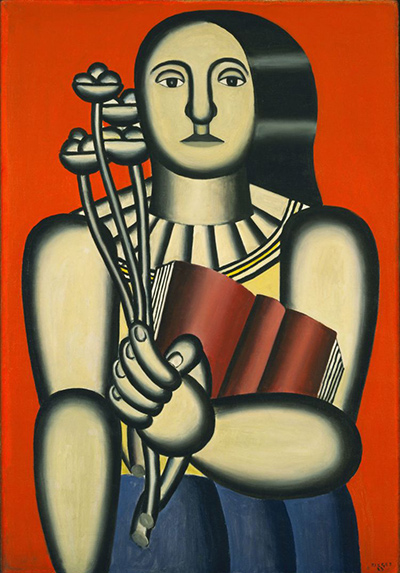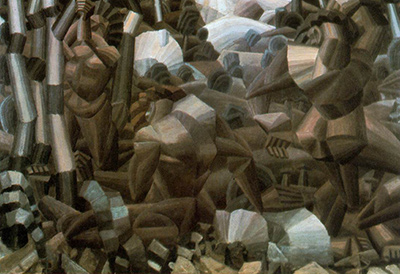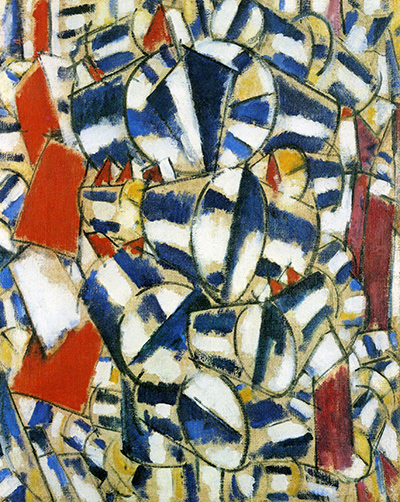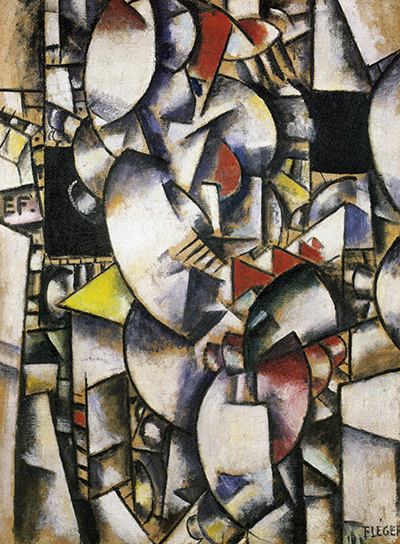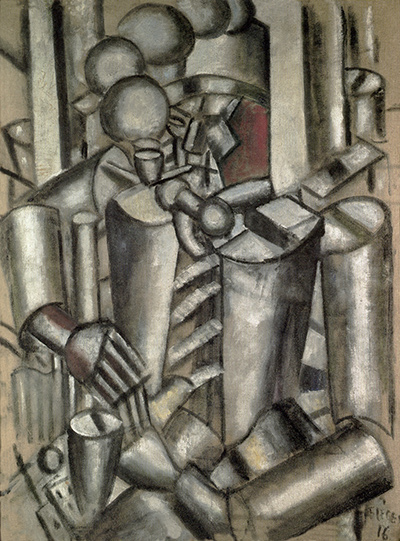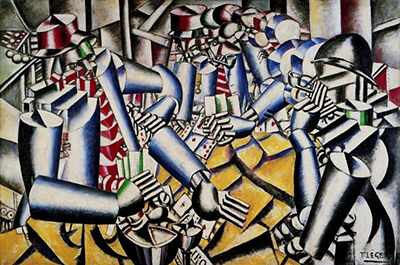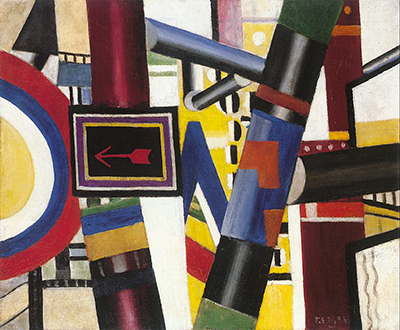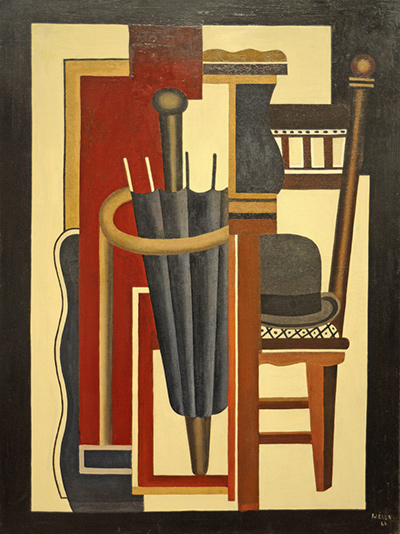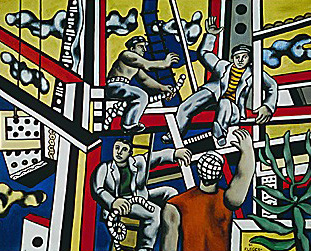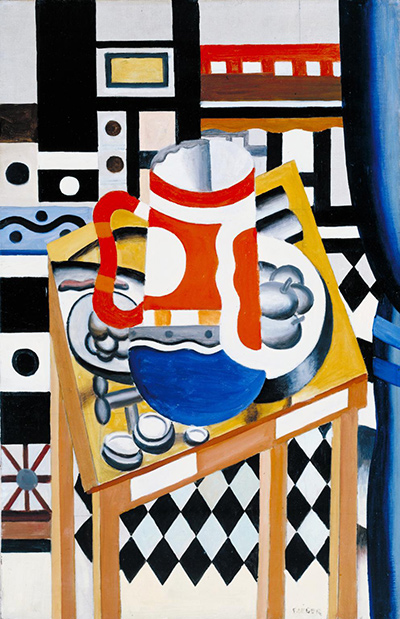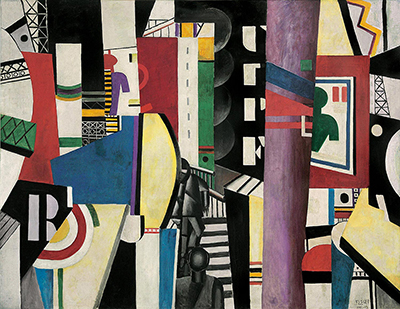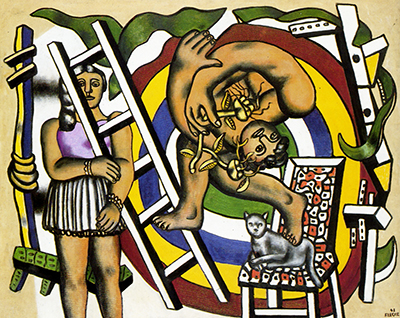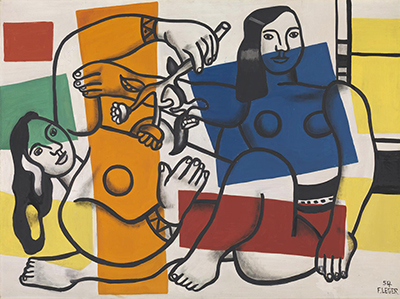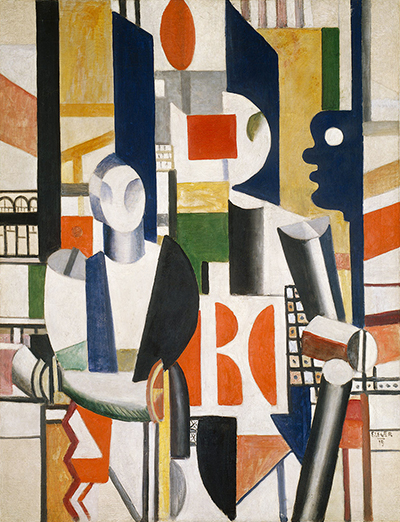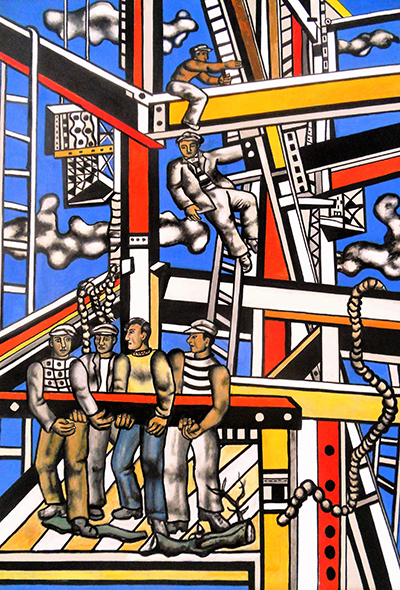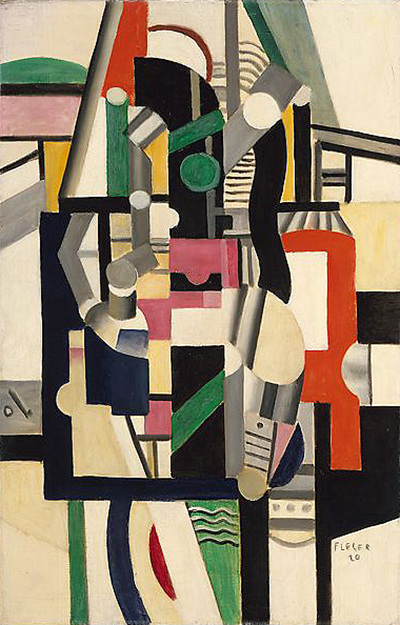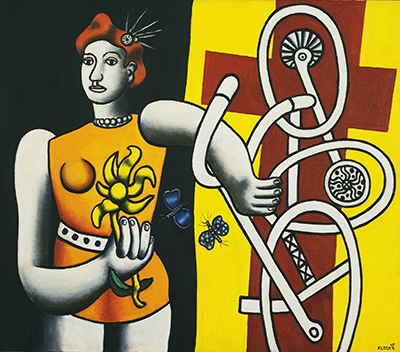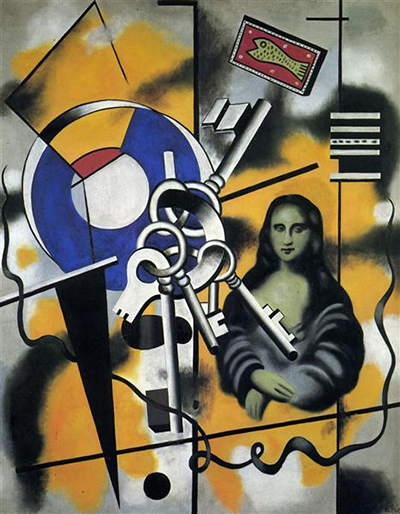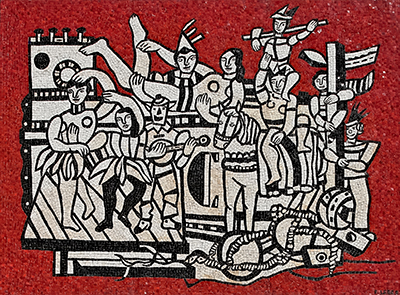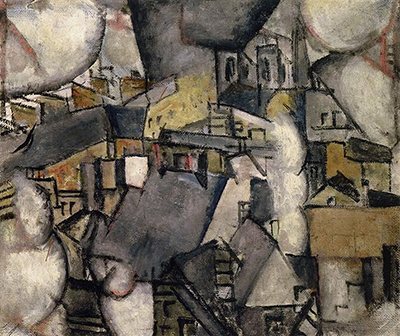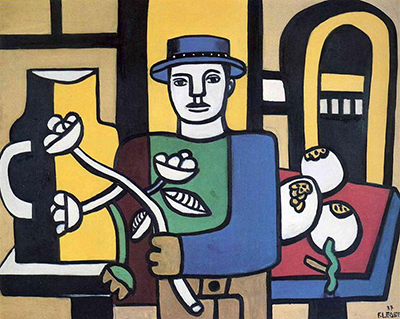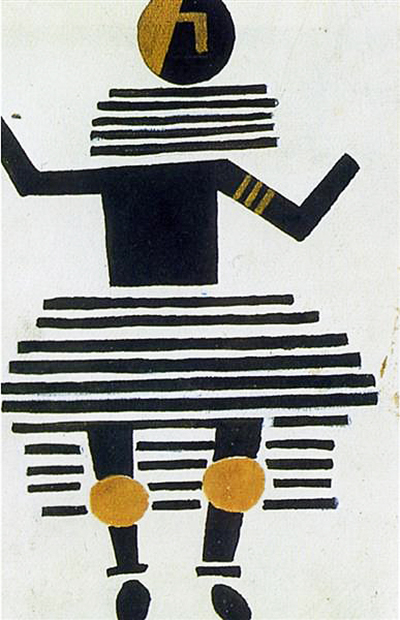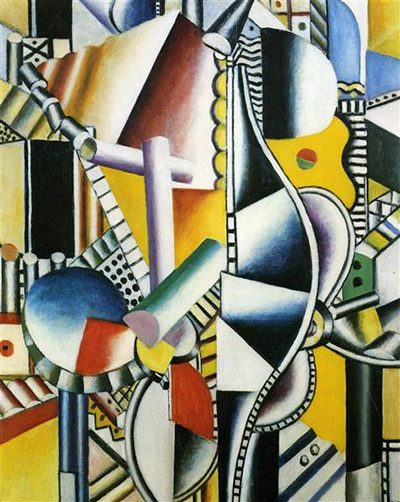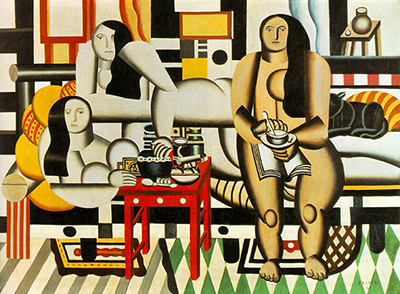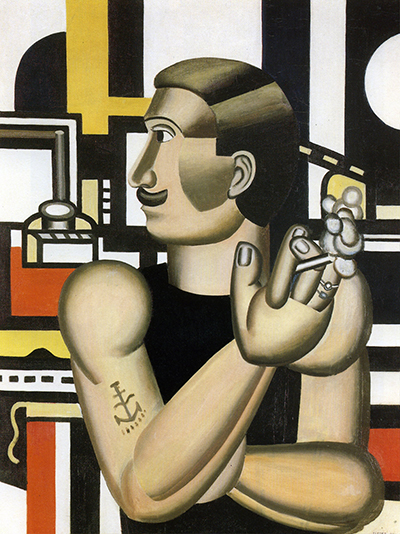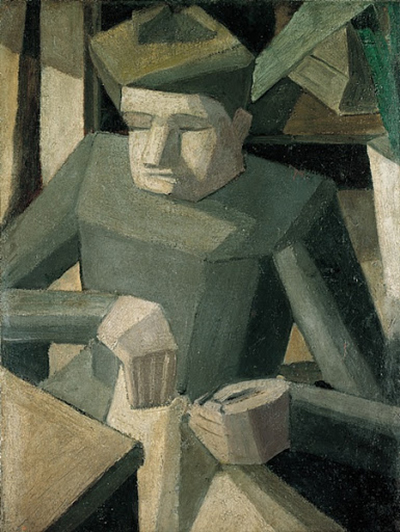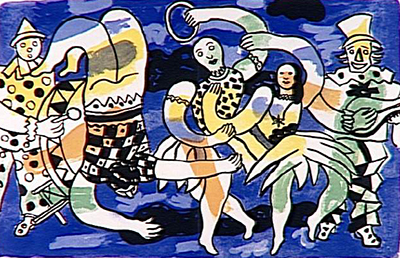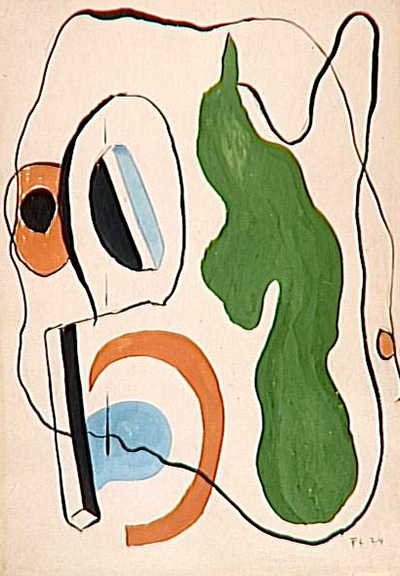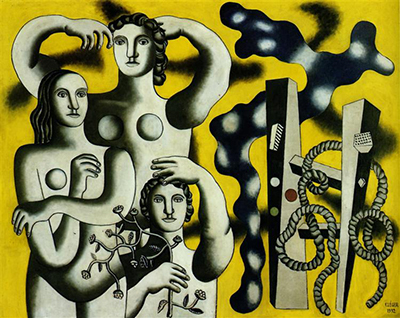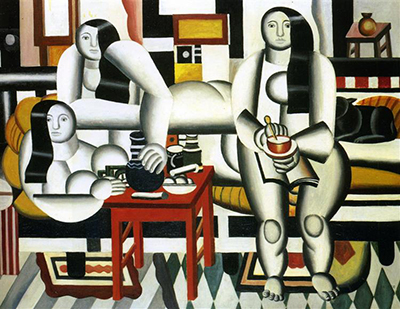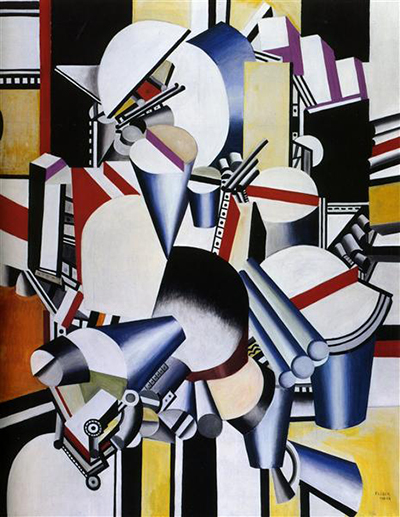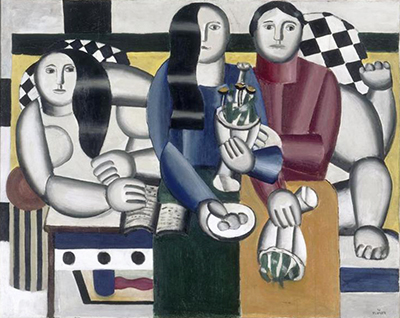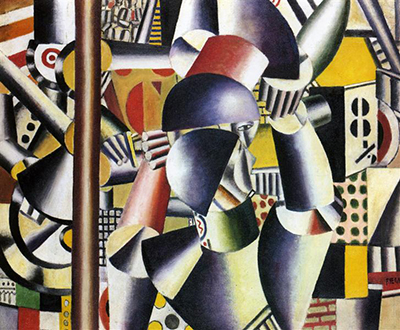The use of primary colours and cylindrical forms, the sense of urgency and movement and the illusion of three-dimensionality. These are all hallmarks of a Fernand Leger painting.
Leger was a French painter whose subject matter included a wide array of everyday objects such as beer mugs, umbrellas and pipes as well as the human form from every walk of life. His reputation became cemented as a Cubist painter, with his style varying between figuration and abstraction. Despite these variations, his paintings were always graphic and favoured primary colours, patterns and a bold form and while Leger embraced the Cubist discipline of fracturing objects into geometric shapes, his works were recognizable in that they depicted the illusion of three-dimensionality and his use of robot-like human figures that extolled the untold virtues between man and machine. Influenced by the chaotic calamity of urban spaces, he created a shifting paradigm of noise and movement in his paintings that later became his trademark.
As a young man he initially trained as an architect and after moving to Paris, he supported himself as an architectural draftsman. His discipline as a draftsman clearly influenced his paintings and nowhere is this more evident than in his first important painting, Nudes in the Forest, which showcased his own special brand of Cubism, termed Tubism by his critics, thanks to its emphasis on cylindrical forms.
Leger's paintings from 1912 to 1914 became more abstract, with tubular, conical and cubed forms rendered in primary expulsions of colour, as evidenced in the series of paintings entitled Contrasting Forms. Leger's experiences in the French Army during the First World War also had a significant impact on his work. It was during this time that he sketched artillery pieces and airplanes, painting Soldier with a Pipe in 1916 while on furlough. In 1917, he painted The Card Players, a canvas of robotic figures that marked the beginning of Leger's mechanical period, where the subject matter he painted was characterized by sleekly-rendered, tubular machine-like forms. The frontal compositions, firm contours and smoothly-blended colours of these paintings are reminiscent of the works of Henri Rousseau, an artist Leger greatly admired. In the late 1920's, Leger's work gradually shifted, whereby irregular forms became more important, taking centre stage. A figural style emerged in the 1930's, as depicted in his painting entitled, Two Sisters. During the Second World War, Leger lived in the U.S. and found his painting inspiration in the unnatural juxtaposition between industrial refuse and the landscape which resulted in works such as Romantic Landscape from 1946.
After the Second World War, Leger returned to France where he joined the Communist Party. During this time, his work became less abstract and he turned his talents to producing paintings of figure compositions depicting scenes from everyday life featuring acrobats, builders and divers. Leger has been called by some a progenitor of Pop art; hailed as the first painter to take his imagery of the machine age and make the objects of consumer society the subjects of his paintings. Although his eclectic interests have resulted in a variety of projects ranging in scope from book illustrations and stained glass windows to polychrome ceramic sculptures and set and costume designs, his legacy will live on in his countless paintings, in a museum that bears his name in Biot, Alpes-Maritimes, Frances, in a pair of Leger murals in the General Assembly Hall of the United Nations in New York City and in his work as a teacher to a host of luminary students whose lives he has influenced.



